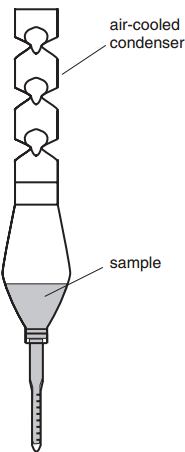


 علم الكيمياء
علم الكيمياء 
 الكيمياء التحليلية
الكيمياء التحليلية 
 الكيمياء الحياتية
الكيمياء الحياتية 
 الكيمياء العضوية
الكيمياء العضوية 
 الكيمياء الفيزيائية
الكيمياء الفيزيائية
 الكيمياء اللاعضوية
الكيمياء اللاعضوية 
 مواضيع اخرى في الكيمياء
مواضيع اخرى في الكيمياء
 الكيمياء الصناعية
الكيمياء الصناعية |
Read More
Date: 7-5-2017
Date: 23-1-2017
Date: 18-4-2017
|
Sample Cleanup
Sample cleanup is particularly important for analytical separations such as GC, HPLC, and electrophoresis. Many solid matrices, such as soil, can contain hundreds of compounds. These produce complex chromatograms, where the identification of analytes of interest becomes di‰cult. This is especially true if the analyte is present at a much lower concentration than the interfering species. So a cleanup step is necessary prior to the analytical measurements. Another important issue is the removal of high-boiling materials that can cause a variety of problems. These include analyte adsorption in the injection port or in front of a GC-HPLC column, false positives from interferences that fall within the retention window of the analyte, and false negatives because of a shift in the retention time window.

Figure 1.1. Kuderna–Danish sample concentrator.
In extreme cases, instrument shut down may be necessary due to the accumulation of interfacing species. Complex matrices such as, soil, biological materials, and natural products often require some degree of cleanup. Highly contaminated extracts (e.g., soil containing oil residuals) may require multiple cleanup steps. On the other hand, drinking water samples are relatively cleaner (as many large molecules either precipitate out or do not dissolve in it) and may not require cleanup.



|
|
|
|
التوتر والسرطان.. علماء يحذرون من "صلة خطيرة"
|
|
|
|
|
|
|
مرآة السيارة: مدى دقة عكسها للصورة الصحيحة
|
|
|
|
|
|
|
نحو شراكة وطنية متكاملة.. الأمين العام للعتبة الحسينية يبحث مع وكيل وزارة الخارجية آفاق التعاون المؤسسي
|
|
|